.
The Military of Cyprus is comprised of the Cypriot National Guard, a combined arms force with land, naval and air elements.
Greece maintains the Hellenic Forces Regiment on Cyprus (ELDYK) on the island, but this is not part of the Republic of Cyprus military.
This article focuses on the forces loyal to the de jure government of Cyprus. For information on the military capabilities of the de facto Turkish Republic of Northern Cyprus, see Turkish Cypriot Security Force
Conscription
Military service in the Republic of Cyprus is mandatory for males. The minimum obligatory service period is 18 months.
All male visitors to the island of military age (16 and over) who have a father of Cypriot extraction are required to obtain an exit visa from a Defence Ministry office.
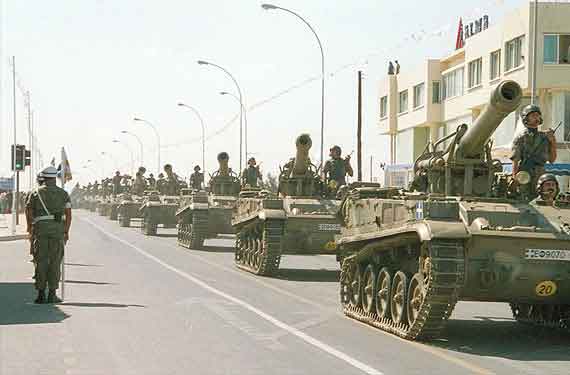
Military parade on the occasion of Cyprus Independence Day ( Source : Aspect of Cyprus)
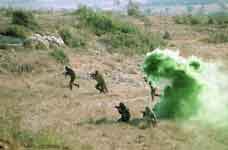
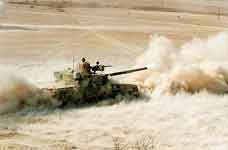
Nikiforos military exercise by the National Guard
Equipment
The United States of America has an arms embargo on any recent US weapons being used by either side. The Greek Cypriot side was recently criticised for acquiring a self-propelled artillery guns (subsequently returned) from the Greek National Army for breaching this embargo.
The Turkish Cypriot side, which controls approximately 38% of the island, has also been heavily criticised for numerous breaches of the embargo.
Standard Infantry equipment used in Cyprus is the G3 Automatic rifle, both by Greek Cypriot and Turkish Cypriot Forces.
Main Battle Tanks
AMX30 - (Type: AMX30-B2)
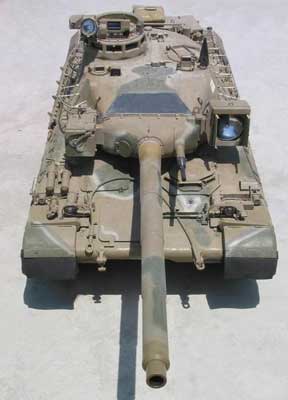
Cypriot AMX30-B2
The French made AMX 30 B2 has been in the arsenal of the Cyprus National Guard since the 1980s. Currently the AMX 30 B2 has undergone several upgrades since its original purpose, none of which is more impressive than the ability to fight in all conditions. Night time fighting ability and the ability to fire while in motion make this main battle tank a worthy opponent on the field of battle.
Most notable of all is that the Cyprus National Guard maintains these vehicles in excellent condition. As a result of their high degree of readiness, and all the upgrades over the years, this tank is capable of continuing its role as the main battle tank of choice for Cypriot field commanders. It might not be as flashy as the T-80U, but its a better work horse in battle.
T-80 (Type: T-80U)
generation platform of armor, which is equivalent in its lethality to all other armor options in the European theatre. Capability of firing both anti-tank missiles and projectiles while moving, the T-80U represents the most durable and capable defensive weapon that the Cypriots have in case of a military conflict.
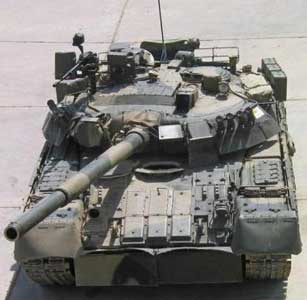
Cypriot T-80U
The T-80U has a crew of three.
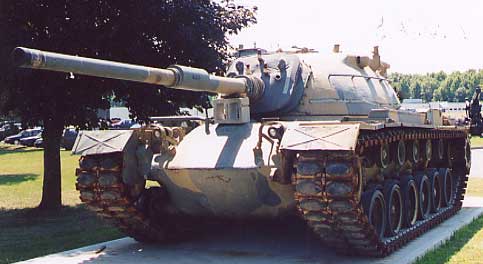
A M48A5 Battle Tank
M48 (Type: M48A5, belonging to the Greek Army, stationed in Cyprus)
Armament: 1 - 105mm M68 rifled gun
1 - 7.62mm coaxial MG
1 - 12.7mm AA MG
Engine: Continental, AVDS-1790-2D, V-12, diesel super-
charged, 750 hp
Speed; 30 mph Range: 300 miles Crew: 4 Weight: 50 tons
This model used the 105mm M68 gun of the M60 tank as well as the diesel engine. The large cupola of the earlier M48s was replaced with an Israeli designed low profile version. Suspension and tracks were upgraded. No longer in service in the U.S. Upgraded by many allied countries to the M60 standard. Final model of the M48 line.
EE-9 Cascavel
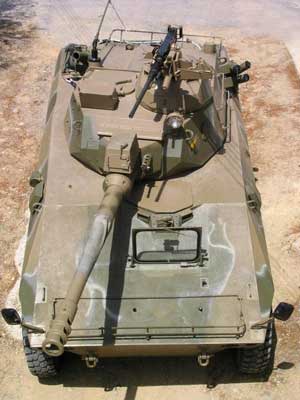
Cypriot Cascavel Light Tank
the late 1990's Brazil began to flex its muscles in the weapons market, and one of the results was the introduction of the EE-9 Cascavel to the Cyprus National Guard. The Cascavel is in essence an all-purpose armored vehicle. It can be used to spearhead an attack, or it can be used as a purely defensive weapon, depending on the scenario.
The small frame of the Cascavel makes it difficult to square off with a main battle tank, but that was never its purpose. The Cascavel is meant to give infantry just the right amount of protection to complete its mission. A crew of three mans this vehicle.
Armoured Personnel Carriers
The BMP-3 has been around for over four decades, and has gone through three major variations, the -1, -2 and -3 variants. The latest variant is the BMP-3, which has both troop transport capability, as well as anti-tank and as well as anti-personnel capability. It is also fully amphibious. 10 fully armed soldiers can be transported in this armored infantry vehicle.
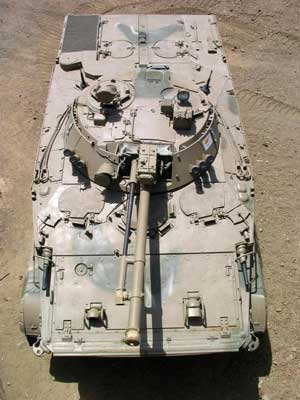
Cypriot BMP-33
The BMP-3 program aims to increase the ability of the Cyprus National Guard to be rapidly mobile in response to the needs of battle. The crew of the BMP-3 includes one driver, and a gunner.
Leonidas (APC Designed and Manufactured in Greece)
Developed by a consortium that includes Daimler Steyr and the Hellenic Defence Industry (EBO), the "Leonidas" armored infantry fighting vehicle, or AIFV, is the backbone of both the Greek Army and the Cypriot National Guard. The "Leonidas" can carry 12 fully armed soldiers into battle.
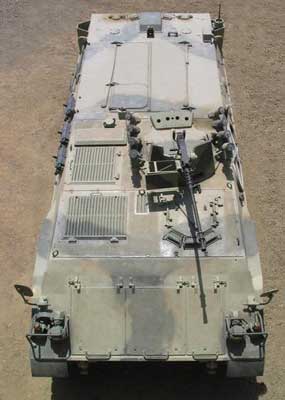
Cypriot Leonidas AIFV
The "Leonidas" is also the progenitor of the "Kentauros" next generation AIFV that Greece is developing, hoping to capture an export market. "Kentauros" is meant to match the capabilities of the American Bradley AIFV which has seen use in both the first and second Persian Gulf war.
The "Leonidas" has a crew of two.
VAP(Type: VAB VCI)
The French firm GIAT thought of putting a 30mm anti-infantry gun on top of a VAB troop transport, and the Cyprus National Guard liked that idea and inducted the VAB VCI Variant into its ranks. As a reconnaissance vehicle, the VAB VCI allows for rapid entrance and exit to the field of battle, and the ability with its 30mm gun to do severe damage to soft targets like radar emplacements and low flying objects like helicopters.
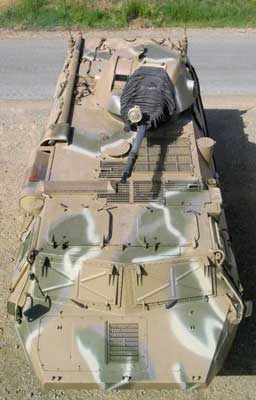
Cypriot VAB-VCI type
The Cyprus National Guard retains high degrees of war-time information gathering capabilities by having weapons like the VAB VCI on hand. The VAB VCI can also transport 8 fully armed me into battle in addition to a driver, a navigator and a gun operator.
VAP (Type: VAB NG)
The VAB NG has about 1400 improvements from the original model, and the Cyprus National Guard is in the process of making the transition to the NG standard. The VAB NG can carry up to 12 armed soldiers into battle, including a driver and a navigator. The VAB is a product of the French firm GIAT, and is a completely amphibious vehicle, with all terrain capability.
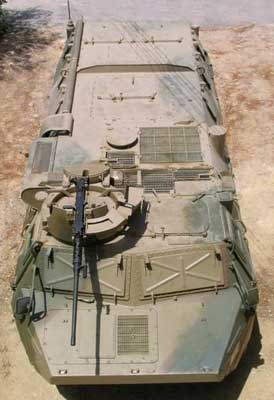
Cypriot VAB NG Type
The Cyprus National Guard uses the VAB as a robust troop transporting workhorse, usually in conjunction with the need to pull large transport dollies for water, fuel and ammunition. In this capacity the VAB resembles more a donkey on wheels.
Mobile Anti-Tank Weapons
VAB with MILAN-3 AT Missile
In the mid-1990s, France's GIAT announced it had developed a new variant of the MILAN anti-tank missile. The variant, known as MILAN-3 was capable of out smarting anti-missile defences, and was capable of destroying armored targets with reactive armor, the latest defence against anti-tank missiles at that time.
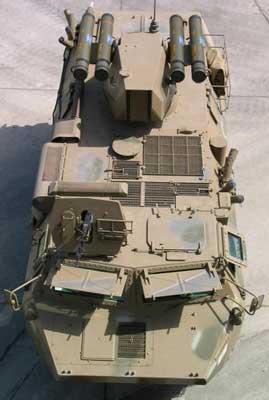
Fully Loaded VAB with 4 MILAN Tubes
GIAT placed the MILAN-3 on top of their already popular VAB troop carrier, and the Cyprus National Guard inducted this lethal defensive weapon into its arsenal. To date only Cyprus, France and two other countries utilize the VAB MILAN-3 platform.
The VAB Milan-3 can carry 8 troops into battle, with an additional crew of three to drive, navigate and fire the main weapon (MILAN-3)
EE-3 Jararaca with MILAN-3 AT Missile
Remember earlier when we mentioned the VAB+MILAN-3 combination and how lethal it can be... now imagine placing that kind of firepower on a vehicle with increased fuel efficiency, endurance and speed... what you get is the Jararaca Anti-Tank variant with MILAN-3 launcher.
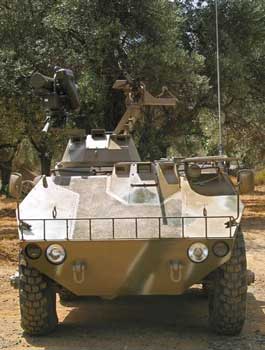
Cypriot Jararaca with one MILAN-3 AT Missile
Each vehicle has a crew of two only, one driver, one gunner. Each vehicle can carry up to 7 (one already loaded, six in the cabin) MILAN-3 missiles. The Cyprus National Guard uses this vehicle as a scout to search and destroy enemy armor.
Airforce
The Republic of Cyprus has no airforce in terms of fighter and bomber airplanes. It mainly consists of Helicopters (both Transport Helicopters and Attack Helicopters), radar systems and major anti-aircraft systems. In terms of Airplanes, two photo-reconnaissance planes are operated, however one of them was lost in a training accident in September 2005 with both pilots dead. The most tragic accident however occurred on the 10th July 2002, when a transport helicopter crashed, killing all five passengers. Within the passengers was the Commander of the National Guard, Lieutenant General Evangelos Florakis. The other four were the Commander of Cypriot Air Force Brigadier Stelios Demenegas, Lieutenant Nikos Georgiou and the two helicopter pilots, Flight Lieutenant Paris Athanasiades and Flank Officer Michalis Shiakallis.
Gazelle Helicopter With HOT AT Missile
In the late 1980's Cyprus purchased these scout helicopters from France with the purpose of using them for advanced scout missions for search and destroy scenarios. Each Gazelle can carry four HOT missiles into battle.
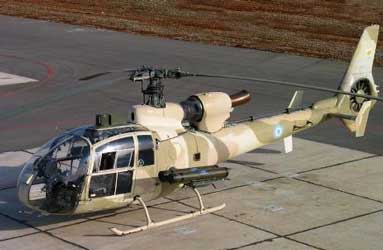
Cypriot Gazelle Helicopter in Helipad
The HOT missile platform is an older anti-tank missile platform, but it serves the purpose of giving the Cyprus National Guard an air scouting ability with increased lethality.
Mil Mi-35
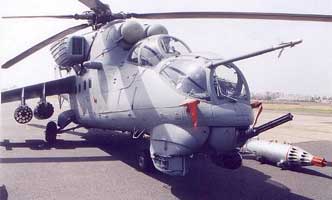
Mi-35 with Armament
The Mil Mi-35 is the export version of the Mi-24 attack transport helicopter. Designed originally as a platform for both troop transport and anti-tank operations, the Mi-35 has evolved into a lethal anti-tank platform using the ATAKA anti-tank missile system. The Mi-35 can carry up to 8 ATAKA missiles into battle, including two salvos of anti-personnel rockets and a powerful 30mm machine gun. The Mi-35 can carry in addition eight fully armed troops (air cavalry or commandos) and a crew of two.
PC-9A Pilatus Aircraft
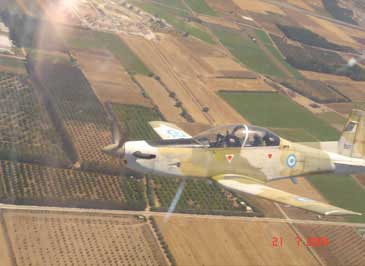
A PC-9/A during a training flight, in Cypriot colouring
The PC-9/A is a two-seat single engine turboprop aircraft and is the major basic training aircraft for the Australian Defence Force (ADF). Manufacturer Pilatus Role Two seat advanced trainer; forward air controland aerobatics Engine Pratt and Whitney PT6A- 62 turboprop- 950 shaft horsepower (708 kW) Airframe Length: 10.18 m Height: 3.28 m Wingspan 10.24 m Weight 2, 250 basic, 2710 kg maximum (PC-9/A (F) max 3210 kg) Range (with two underwing tanks) 1,850km, combat radius 650 km Ceiling 25,000 ft Weapons Two underwing smoke grenade launchers Avionics VHF omni directional range/ instrument landing system, two multi-functional cathode ray tube displays Crew Pilot, observer/student
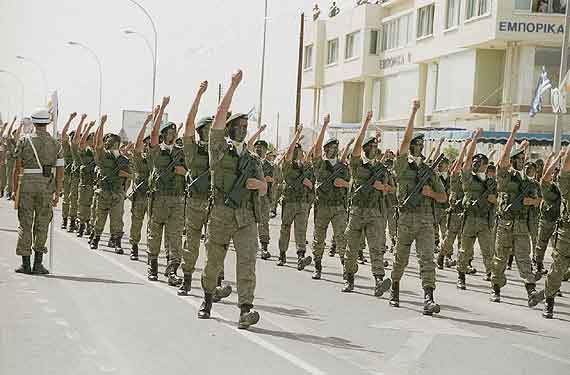
Commandos parading ( Source : Aspect of Cyprus)
| Ancient Greece
Science, Technology , Medicine , Warfare, , Biographies , Life , Cities/Places/Maps , Arts , Literature , Philosophy ,Olympics, Mythology , History , Images Medieval Greece / Byzantine Empire Science, Technology, Arts, , Warfare , Literature, Biographies, Icons, History Modern Greece Cities, Islands, Regions, Fauna/Flora ,Biographies , History , Warfare, Science/Technology, Literature, Music , Arts , Film/Actors , Sport , Fashion --- |
Retrieved from "http://en.wikipedia.org/"
All text is available under the terms of the GNU Free Documentation License

